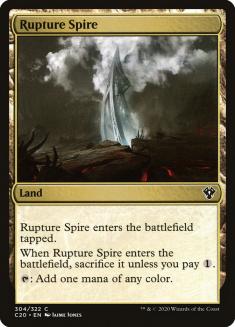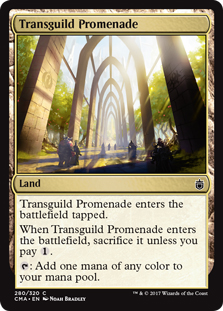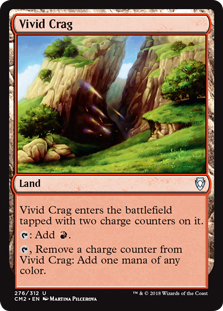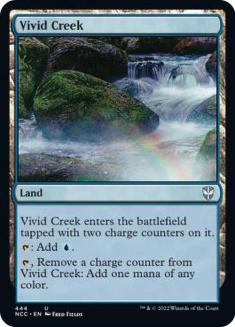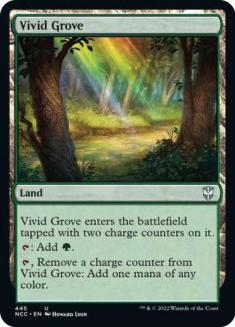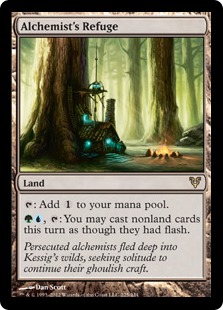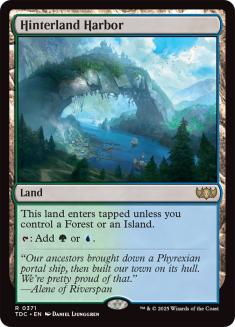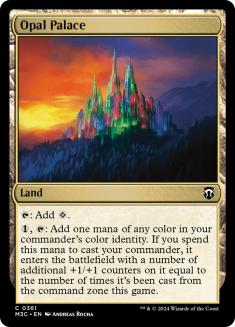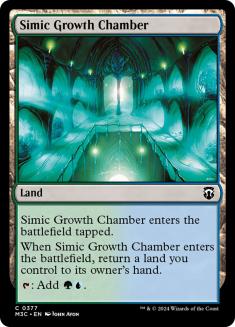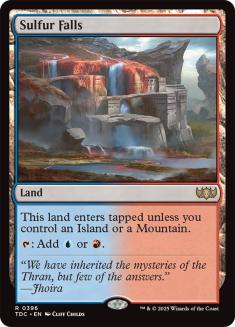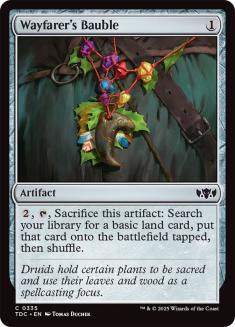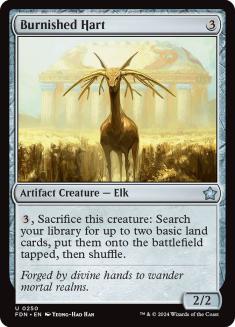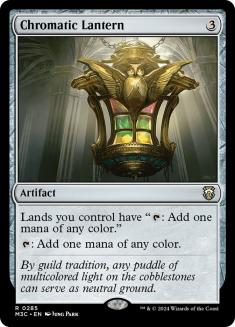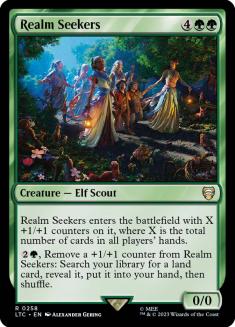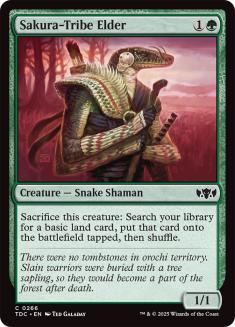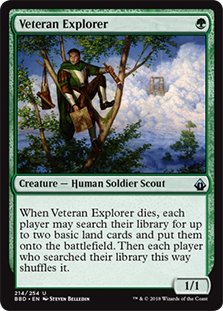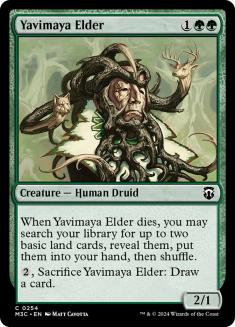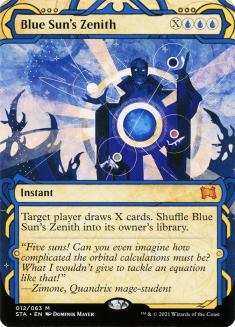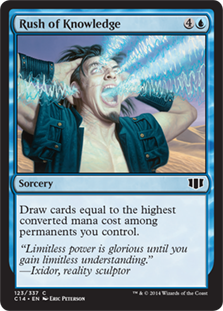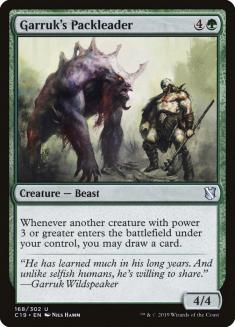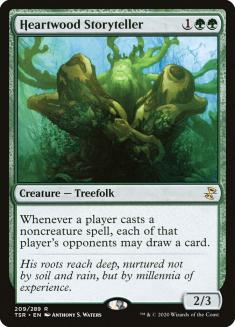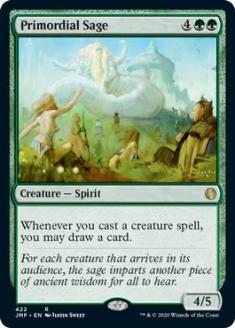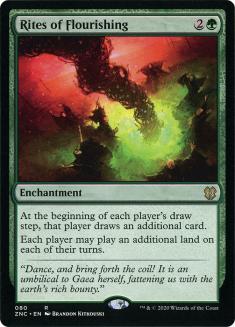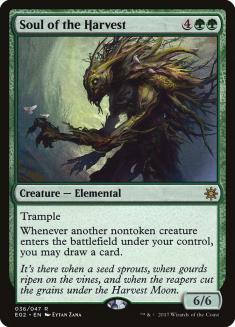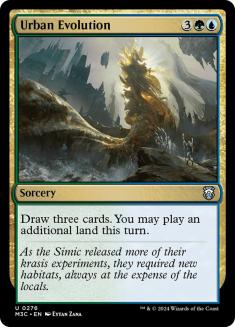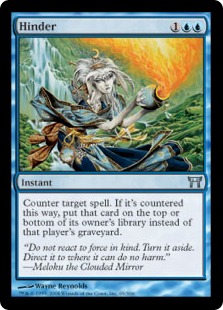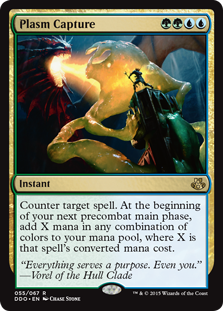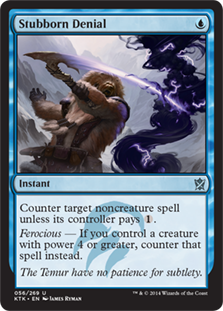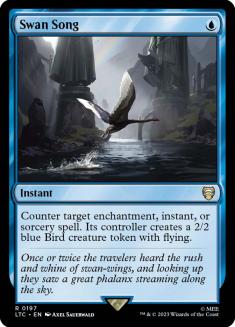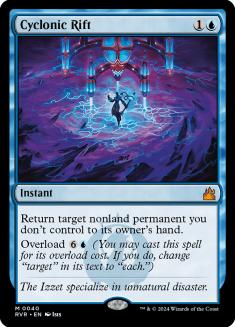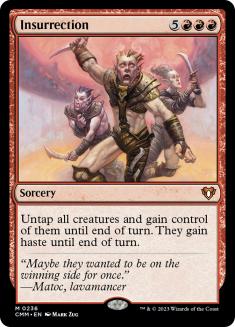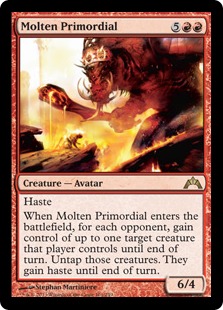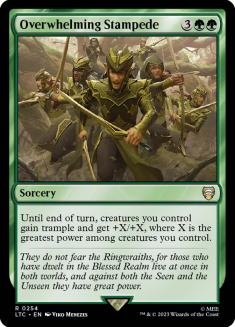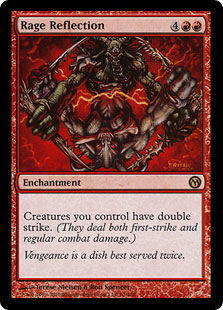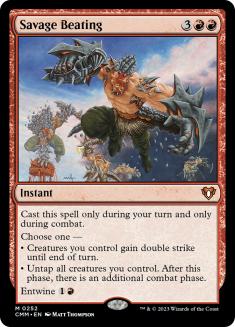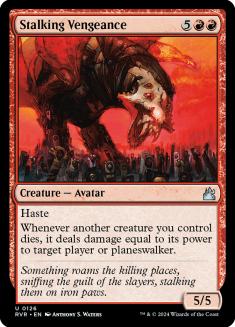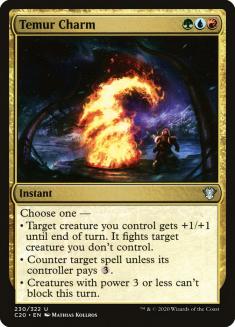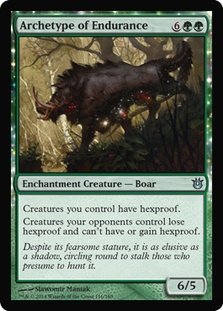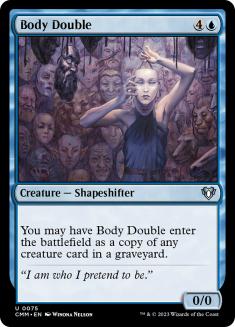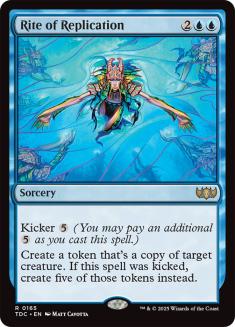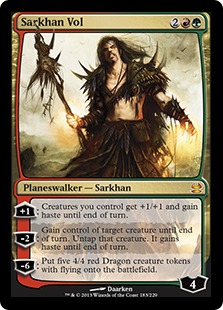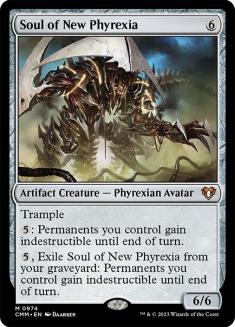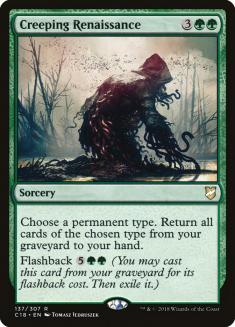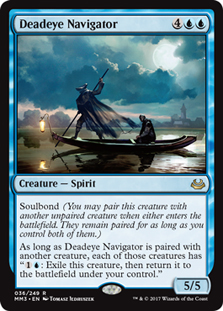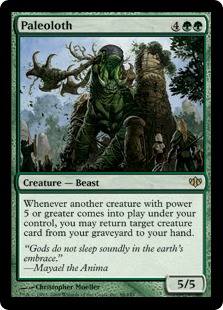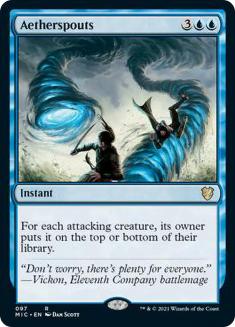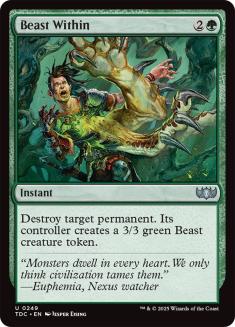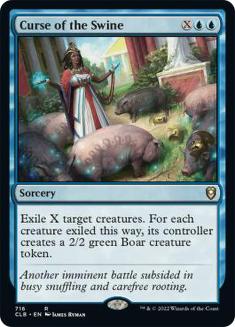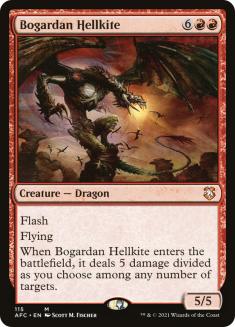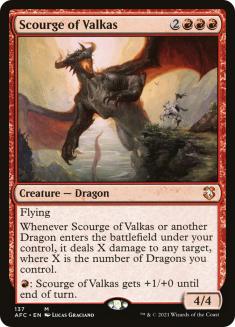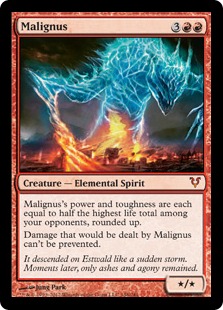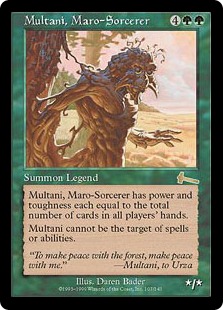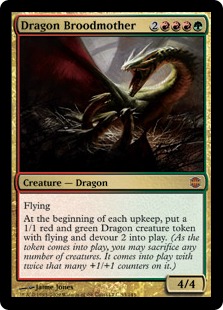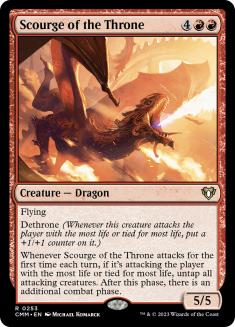Khans of Tarkir brought a new crop of Commanders, and each one has opened up some design space for wedge-commander decks. Anafenza, the Foremost opens up Living End; Sidisi, Brood Tyrant opens up non-combo Sultai graveyard strategies; Zurgo Helmsmasher gives Mardu control a serious boost; Narset, Enlightened Master is a thematically appropriate commander for Wild Research-style decks.
This week we’re going to be talking about the blandest of all the new commanders: Surrak Dragonclaw. This week’s submitter really nails why bland, in this case, is exactly what the Temur decks need.
|
Dear Azami,
I have been playing EDH for several years and love the format. (Your articles have helped me with multiple builds and are a joy to read. Thanks for doing Commander: Creatures: 31 Artifacts/Enchantments: 13 Instants/Sorceries: 18 Planeswalkers: 1 Lands: 35 6 Forest 5 Island 4 Mountain
Some of the card choices are simply because I owned the card, and I have had trouble finding cards that are worth replacing them. I am on a budget, so if
The basic strategy is beatdown, with some control/protection aspects. I want to be a powerhouse of creatures that no one can counter and no one can target Thanks so much for considering my list! Caleb |
Caleb’s take on the dangers of running some of the other Temur commanders tracks with my own personal experience. I love the wedge, and currently have two
different Temur Commander decks put together: an Animar, Soul of Elements morph deck and a Maelstrom Wanderer ramp deck. They’re fun, but they do tend to
draw the attention of the table! Maelstrom Wanderer represents unending gas and kills in three swings; Animar, Soul of Elements can kill you, sure, but it
also is basically immune to spot removal and represents a major cost reduction in subsequent creatures. Both of them scream, “kill me!” and it’s a shame,
because then you don’t get to have battlecruiser fun.
And Temur is the fun wedge! So this week I Timmy’d out and leaned into the Dragon subtheme. I took a hint from the inclusion of Tooth and Nail and Genesis
Wave to lean into your creature count; this version of the deck has fewer counterspells and other disruption, but I tried to make up for that by giving you
even more ways to draw cards.
So here’s my breakdown of this week’s gameplan:
Goal
: A Surrak Dragonclaw deck that wins big.
Means
: Dragons and draw engines.
Restriction
: Around $70.
That’s the plan, so let’s get to the update!
Lands
Out
(5):
In
(9):
I suspect some of the mana-doubling issues you’ve been having may be exacerbated by running too few lands. Again, I’m an evangel of running 38 lands in
most decks, and that’s especially true for a Temur deck that’s looking to go big.
I played “complete the cycle” to start, adding in Hinterland Harbor, Sulfur Falls, and Simic Growth Chamber because you were running their counterparts,
and they’re all good lands. The two Innistrad duals are a bit pricey, but they’re always going to be good enough to make it into your Commander decks, even
if you do end up moving away from this configuration at some point. For the final land addition, I added in Alchemist’s Refuge. I’m shocked at how cheap
that card is! It’s a better Winding Canyons, where the restriction is color identity and not permanent type. It rounds out what the deck wants to do, so it
seemed like a strong inclusion.
Then I got around to changing up your ramp options, and I realized that you need a few more basics. This meant taking out the two paylands, which aren’t
super strong in general, and also cutting the Vivid cycle. I go back and forth on the Vivid lands; I like them in some decks, but in decks where the
comes-into-play-tapped aspect is a downside I feel more comfortable cutting them. Plus, mechanically, I dislike having to keep counters on my land. I tend
to do a lot of mana stacking in the late game, usually just because space is at a premium, and counters on my lands are so easy to inadvertently knock
around.
Ramp
Out
(1):
In
(6):
Wayfarer’s Bauble is a strong card, but it’s the type of artifact ramp spell that I like to cut when I’m playing green. Green’s color identity is ramp,
draw, beef, and, with a few notable exceptions to be discussed below, I don’t feel the need to outsource those functions to artifact cards.
Particularly non-creature artifacts, I should say, as I gladly brought in Burnished Hart. Solemn Simulacrum isn’t super pricey, and might be a worthy
addition down the line, but Burnished Hart does a lot of the same things while ramping you a bit further. That extra land in play is worth more than a card
when you’re running Mana Flare effects. Plus, I’m a little tired of jamming Solemn Simulacrum in every Commander deck, so I’ve enjoyed the diversity
offered by the Hart.
Chromatic Lantern is another strong artifact that does something that no green card can do equally well: it gives you perfect mana and ramps you at the
same time. Joiner Adept and Prismatic Omen both give you perfect mana, but they don’t ramp. And there are plenty of ramp spells out there that don’t offer
perfect mana. But when you’re running cards like Niv-Mizzet, Dracogenius, you probably are going to want at least one card in your pool that lets you use
those abilities to their fullest potential.
Realm Seekers and Custodi Soulbinders are the obvious stand-outs from the Conspiracy cycle of counter-based creatures, as their enters-the-battlefield
conditions tend to be bountiful at all stages of the game, and their abilities are priced appropriately. Since Realm Seekers draws you basic lands, it
seems like a good hybrid of beef and utility.
I rounded it out with the cycle of Commander All-Star Ramp Guys: Sakura-Tribe Elder, Veteran Explorer, and Yavimaya Elder. People are almost always willing
to pop your Veteran Explorer, so I tend to like that card even in decks without reliable sacrificial themes. Sakura-Tribe Elder is Rampant Growth with the
occasional upside of fogging a creature without trample. Good for you, bad against you. And Yavimaya Elder set the standard for this type of creature back
in the day, and it has not yet been overthrown.
Draw
Out
(2):
In
(6):
It’s hard to completely protect yourself from Wrath of God in Commander. Many of the relevant sweepers prevent regeneration, and there are a few, like
Final Judgment, that prevent indestructible from being relevant as well. So, personally, I like to give in to the inevitability of it and just draw more
cards to rebuild. It’s one of the reasons I dislike getting trapped behind an opponent’s Grave Pact lock; you can draw out of a sweeper, but you can’t draw
out of your board presence being constantly eroded. Anyway, I brought in some more draw cards. Between these, the ramp spells, and the increased lands you
should end up seeing more cards this way, and that mostly makes up for being a little weak to Wrath of God.
In general, I dislike my draw to come from one-shot spells. I’m even a little skeptical of Blue Sun’s Zenith and usually prefer to run an engine card over
a more powerful one shot like Rush of Knowledge. Urban Evolution is an exception to that rule. Urban Evolution works as both a ramp spell and a draw spell,
and for that reason I brought it in. While this unfortunately adds to the number of blanks you can Genesis Wave into, most of the time it’s going to be
adding enough value to your hand and board to be worth it.
Garruk’s Packleader is a great example of the type of engine card I like to use to maximize draw. It triggers on 24 of the creatures in the deck and can
even trigger multiple times off either planeswalker. Plus, it triggers Temur Ascendancy, which amuses me. They’ve drawn a lot of lines for “big creatures
trigger this effect” cards, and now the deck contains triggers at three, four, and five power.
Heartwood Storyteller was an easy inclusion once I decided to up the number of creatures you were running. That card gets out of control fast, and the
“group hugs” aspect of the Storyteller should help to mitigate your threat profile and bleed off some of that excess aggro. Observant players will still
notice you tend to be drawing more cards off it than your opponents, but usually it’s not worth wasting a kill spell on it, and if they do, you get a
replacement card for their efforts. In fact, you can often use that to keep the thing alive, since the person who pulls the trigger on the Hero’s Downfall
or whatnot is going to be down two cards compared to their opponents. It’s often not worth it, so don’t be afraid to point it out to an opponent
contemplating such an action. (Yes, Dark Hatchling and friends kill it without triggering the replacement, but then you’ve gotten that card out of your
opponents’ hand.)
Rites of Flourishing is another friendly card that you should be able to abuse more than they can. A social Exploration tied to a Howling Mine, Rites of
Flourishing is going to be better for you than your opponents just because you’ll be going bigger than most of them. Add in the way it cuts against your
threat profile, and it’s a worthy inclusion. Ramp plus draw!
Finally, let’s talk about another pair of cards whose low prices baffles me: Soul of the Harvest and Primordial Sage. In the Tribal Elves archetype,
Primordial Sage and Soul of the Harvest are second and third copies of Glimpse of Nature, respectively. They are some of the best draw engines available to
big green decks, and they come equipped with solid bodies to boot. They’re great cards, and that they’re both available for under a dollar is shocking.
It’s not like they’re unknown! If ever there were cards that should have a Commander price bump, it would be these characters. And yet they’re both readily
available, meriting inclusion in your deck.
Counters and Finishers
Out
(14):
In
(1):
As you can see, this is where I got a lot of room to play, and this is the place where my style of playing Commander might most conflict with your style.
See, I like to play Commander, but I am less concerned about winning it. If you ask my playgroup, they might dispute this, because I can be vicious when I
see a path to victory, but it’s a philosophy that has begun to infuse the decisions I make when I am building, even if I can’t always stay consistent to my
creed in the heat of the moment. But when you stop focusing on winning and start focusing on alternate victory conditions, you get some more room to play.
I mean, if you’re casting Archetype of Imagination in a deck like this, it should win you the game. It’s mass evasion of the almost-entirely-unblockable
sort (i.e. reach still trumps it). It’s an Overrun effect, and those end games.
Do you want the last thing you do in a game to be Insurrection, Molten Primordial, Overwhelming Stampede, Rage Reflection, or Savage Beating? In a deck
like yours there is no subsequent play to those cards. Most of the time you’ll cast them and win on the spot. Since I want to be playing Commander when I’m
out with friends, having a good time over a game of cards, this seems like an anathema to the friendly experience and isn’t going to result in your friends
feeling particularly good about the outcome as well. Interestingly enough, I still like Craterhoof Behemoth, despite it serving a functionally similar
effect. I suppose there’s enough variance with the Behemoth to make up for it, but also the fact it’s tied to a body makes a difference to me.
That’s why I cut most of your finishers.
With the counterspells, it was a similar dispute over the role of a deck like this. Now, I get that you have all those counters to stop Wrath of God
effects, but I think you need to just give in to the inevitability of a board wipe in a game of Commander, and figure out ways to recover instead of
figuring out ways to stop the wraths from happening. Unless you’re leaving up mana every turn–you’re not that type of deck– there’s going to be a window
for that sweeper to land. Thus, you’ll probably end up countering your opponents’ non-wrath plays, which is fine for a lot of decks but seems a bit silly
when you can just go over the top. I kept a couple in, but the ones I kept in were Mystic Snake (abusive with Deadeye Navigator) and Temur Charm (which is
removal and finisher as well).
I cut a lot of good cards from this section, but only because I think you’ll end up with room for more shenanigans in other parts of the deck now.
Sweeper Mitigation
Out
(4):
In
(5):
Of course, you did ask for some sweeper mitigation, and I would be remiss were I to ignore you entirely. But there are different ways to avoid sweepers,
and I’ve highlighted a couple of them in this section.
Haste is one way to mitigate Wrath of God effects, because you can drop your beef and swing in before your opponent can cast a sorcery-speed spell. But
unlike Temur Ascendancy, Fervor doesn’t do anything but give your team haste. That’s why I upgraded it to Sarkhan Vol. People overlook Sarkhan, but not
only does he hasten your team, he also pumps them, Act of Treasons, and spits out dragons if you can get him to ultimate. Those dragons, incidentally,
trigger Temur Ascendancy and Garruk’s Packleader. You probably won’t get to pop him, but it’ll be amazing if you ever do.
Now, a Sarkhan Vol ultimate doesn’t trigger our next mitigation card: Paleoloth. Because Paleoloth was born in Alara, it has slightly higher standards
about what constitutes beef… but that’s not the point. The point is that a great way to recover from a wrath effect is to get your stuff out of the
graveyard. Every Paleoloth trigger gets you a creature back from the ‘yard, and with the mana you should have access to off those doublers, you will often
be able to loop several large creatures out of your graveyard and onto the battlefield in a single turn. Body Double gets you one card; Paleoloth can get
you a lot more.
In case you can’t, or if your Paleoloth happens to die, that’s when Creeping Renaissance comes into play. One of the overlooked Flashback spells from
Innistrad, this card has found a home in Commander. It’s less busted than Praetor’s Counsel, thus avoiding some of the aggro issues that casting that card
will bring, but you get two uses out of it. It’s solid, and it’s a great way to recover from a wipe.
Soul of New Phyrexia offers universal indestructibility, from graveyard or in play. Admittedly, holding up five mana can be tough, but unlike your
Counterspell suite this comes on a strong body that triggers all your other “size matters” cards. If you’re worried about Wrath of God, this is a good
place to look. It’s certainly a better answer than Archetype of Endurance; that card is far too expensive for what it does, and hexproof is not the
strongest ability in Commander in the first place.
Finally, I cut Rite of Replication for Deadeye Navigator. They both do similar things in that they both can give you a ton of enters-the-battlefield
effects from a creature on the board. But whereas Rite of Replication is a one and done spell, Deadeye Navigator is recursive by cards like Paleoloth or
Creeping Renaissance. Plus, it’s a fairly strong lock when it’s soulbound to Mystic Snake, thus giving you another utility package to keep you from having
to grab Craterhoof Behemoth every time you Tooth and Nail.
Removal
Out
(3):
In
(3):
First, the cuts. Aetherspouts seems mean to me. It’s a powerful card, but I like to avoid tuck effects if at all possible. Beast Within is a strong card,
but if I were running a spell like that in this type of Commander deck, I’d prefer something like Decimate that’s more than a one-for-one. Curse of the
Swine is an X for one, but between the chumps (less relevant with Surrak Dragonclaw out, sure, but still less than ideal) and the spell nature, I
decided to switch it up.
Instead, I followed Utvara Hellkite’s lead and brought in a couple of new dragons. Scourge of Valkas may represent a mere point of damage when it enters an
empty board, but it combos well with Utavara Hellkite and further plays nice with Deadeye Navigator and one of the dragons you’ll meet in the final
section. Bogardan Hellkite’s drawback has always been the mana cost, but in a deck like this, where it can be cast off four lands, that doesn’t seem like
to big an issue. Heck, you can even curve into this guy on turn 4, he is that good. Add in natural flash and the ability to split damage over several
targets, and this good card seems like it fits right in.
That leaves Acidic Slime, the tub ring of this section. It’s a staple, and deathtouch plays well with trample.
Beef
Out
(3):
In
(2):
Which brings us to our final section. Multani and Malignus are just large creatures. I get why Malignus is compelling in a deck that runs Rage Reflection,
but I cut that, and even with double strike, Malignus usually can’t kill the opponent with the most life. Multani is admittedly huge, but Realm Seekers is
almost as big, has power and toughness set when it comes into play, and it draws you lands. And Rampaging Baloths might be a good fit for a more dedicated
ramp deck, but you’re not running all the Harrows and Cultivates. In this deck, it’s just a sorcery speed 4/4 every turn. We can do better.
Like Dragon Broodmother. First, this card has the Verdant Force clause attached to it, so you’re getting a dragon on every opponent’s upkeep as well as
your own. Second, if you have Garruk’s Packleader in play, you can devour the token from the previous upkeep to draw an extra card every upkeep. That’s
good! Finally though, it is gangbusters with Scourge of Valkas. When combined with these other cards, you have the potential to get Verdant Force, Baleful
Force, and Magmatic Force, all from the same card. Seems pretty beefy, no?
Last, but certainly not least, is Scourge of the Throne. I added two Scourges and two Souls to the deck, and there’s probably a lesson in that about
balance. Scourge of the Throne is good for a few reasons: it adds that second attack phase that’s going to serve you so well, and dethrone is a social
mechanic. A lot of people like pointing at their cards and saying, “it’s not my fault I’m attacking you, my creature made the decision for me!” This is a
card that does that well, since the dethrone bonus is so huge that it makes swinging at a lower life total usually meaningless. At least during your first
attack.
Kudos
This week I’d like to point out Caleb’s inclusion of Aggravated Assault in his list. That card is spicy, and a lot of people have forgotten about the
Onslaught enchantment. Basically, it lets you attack again and again for as long as you have mana. That’s the type of repeatable benefit I can definitely
get behind.
The List:
Creatures (41)
- 1 Sakura-Tribe Elder
- 1 Kira, Great Glass-Spinner
- 1 Mystic Snake
- 1 Yavimaya Elder
- 1 Fierce Empath
- 1 Veteran Explorer
- 1 Primordial Sage
- 1 Niv-Mizzet, the Firemind
- 1 Bogardan Hellkite
- 1 Heartwood Storyteller
- 1 Farhaven Elf
- 1 Spearbreaker Behemoth
- 1 Paleoloth
- 1 Dragon Broodmother
- 1 Acidic Slime
- 1 Hellkite Charger
- 1 Oracle of Mul Daya
- 1 Terastodon
- 1 Ondu Giant
- 1 Garruk's Packleader
- 1 Brutalizer Exarch
- 1 Balefire Dragon
- 1 Craterhoof Behemoth
- 1 Soul of the Harvest
- 1 Deadeye Navigator
- 1 Niv-Mizzet, Dracogenius
- 1 Mercurial Chemister
- 1 Utvara Hellkite
- 1 Prime Speaker Zegana
- 1 Zhur-Taa Ancient
- 1 Ogre Battledriver
- 1 Scourge of Valkas
- 1 Prophet of Kruphix
- 1 Burnished Hart
- 1 Hydra Broodmaster
- 1 Scourge of the Throne
- 1 Dack's Duplicate
- 1 Realm Seekers
- 1 Genesis Hydra
- 1 Soul of New Phyrexia
- 1 Surrak Dragonclaw
Planeswalkers (2)
Lands (39)
- 8 Forest
- 5 Mountain
- 6 Island
- 1 Gruul Turf
- 1 Izzet Boilerworks
- 1 Simic Growth Chamber
- 1 Kher Keep
- 1 Rootbound Crag
- 1 Kazandu Refuge
- 1 Command Tower
- 1 Hinterland Harbor
- 1 Sulfur Falls
- 1 Kessig Wolf Run
- 1 Alchemist's Refuge
- 1 Izzet Guildgate
- 1 Simic Guildgate
- 1 Gruul Guildgate
- 1 Temple of Mystery
- 1 Opal Palace
- 1 Mana Confluence
- 1 Frontier Bivouac
- 1 Thornwood Falls
- 1 Swiftwater Cliffs
Spells (18)

As you had a $70 price limit in place, let’s see how we did:
|
Card |
Cost |
|
0.25 |
|
|
0.25 |
|
|
0.25 |
|
|
0.25 |
|
|
0.49 |
|
|
0.49 |
|
|
0.49 |
|
|
0.49 |
|
|
0.49 |
|
|
0.49 |
|
|
0.75 |
|
|
0.75 |
|
|
0.75 |
|
|
0.75 |
|
|
0.99 |
|
|
0.99 |
|
|
1.49 |
|
|
2.49 |
|
|
2.49 |
|
|
2.49 |
|
|
2.99 |
|
|
4.99 |
|
|
4.99 |
|
|
4.99 |
|
|
5.99 |
|
|
7.99 |
|
|
7.99 |
|
|
11.99 |
|
|
69.8 |
Nailed it! Twenty cents under the limit, and since this week Caleb will be receiving a $20 store credit for his participation in the column, that brings
the cost-to-Caleb down below $50. Seems pretty solid to me. Especially when you take into account cards like Sarkhan Vol at $12 or Scourge of the Throne at
$6, which might be worth skipping due to their middling cost-benefit analyses.
That’s it for this week! Caleb, your deck was fun, and now Surrak Dragonclaw has some draconic friends to play with; to the rest of you, have a good week
and see you next time!
Want to submit a deck for consideration to Dear Azami? We’re always accepting deck submissions to consider for use in a future article. Only one deck
submission will be chosen per article, but being selected for the next edition of Dear Azami includes not just deck advice but also a $20 coupon to
StarCityGames.com!
Email us a deck submission using this link here!
Like what you’ve seen? Feel free to explore more of Dear Azami here, in the Article Archives!
And feel free to check Jess’s own Command of Etiquette
column on Hipsters of the Coast, for more Commander and casual content.

